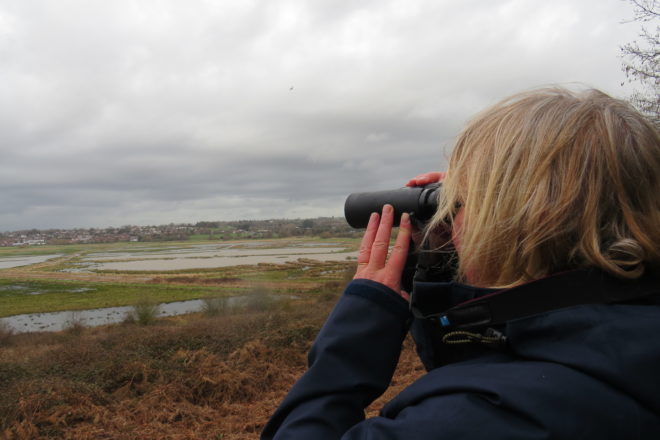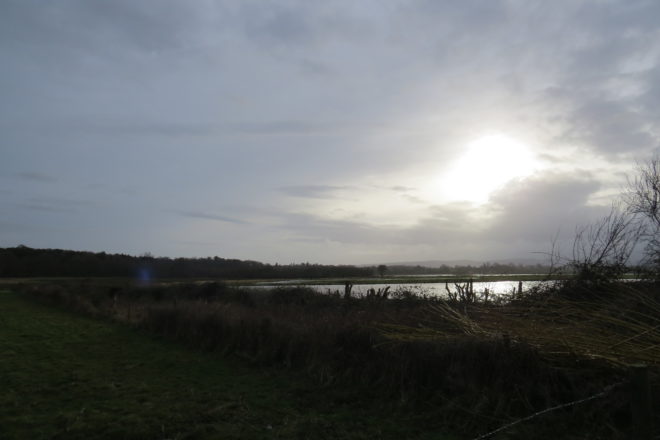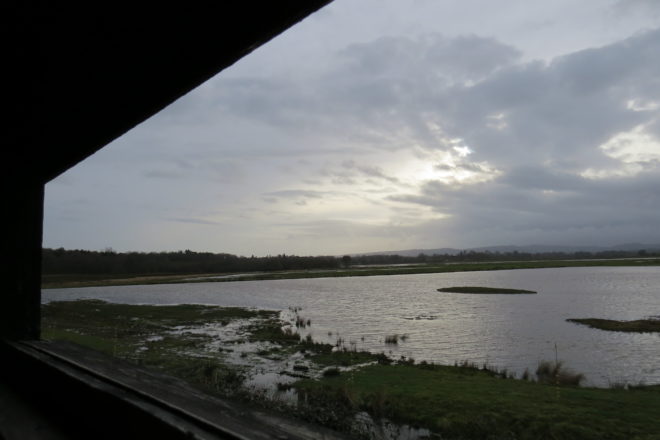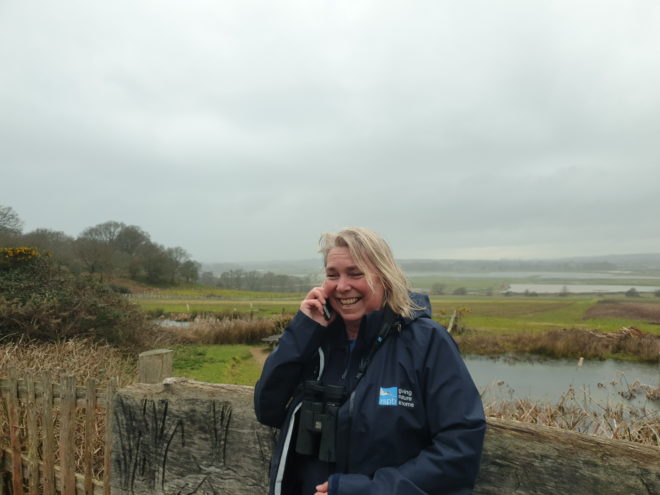Celebrating Women Custodians of the National Park
March 8, 2019
Some 112,000 people live and work within the South Downs National Park boundaries, with many more coming in to visit. Conserving and enhancing the natural beauty, wildlife and cultural heritage of the area takes a lot of dedicated work.
Women are at the forefront of those efforts and on International Women’s Day we’re celebrating the women who serve as custodians of the South Downs National Park.
We sat down to talk with Julianne Evans, Senior Site Manager for RSPB’s South Downs RSPB reserve, who is responsible for managing key wetlands sites across the National Park for wildlife and visitors.

What drew you to conservation work?
It was in my blood from the word go. Ever since I can remember I have been into wildlife conservation and nature.
I can remember being the last one in from the playground at nursery school because I was watching a kestrel, waiting for it to catch something.
I was a member of the Young Ornithologists Club (now Wildlife Explorers) and got my first pair of binoculars when for my 8th birthday and I used to watch birds in the garden and draw their behavior.
What were your first impressions of working for the RSPB and how was that changed over time?
The thing that’s always struck me about the RSPB is just how passionate everybody is about their work and the cause.
The RSPB’s mission for saving nature is obviously something close to my heart and I’ve had the privilege of working with so many great people.
The organisation does so many things, including working on partnership projects. For instance, as part of a Heritage Lottery Foundation (HLF)-funded partnership project called Back from the Brink, we’re working on ditch management for a tiny rare snail we’ve got here at Pulborough Brooks all the way up to our species recovery team eradicating albatross-eating mice on Gough Island to save the Tristan albatross from extinction.
So we’re doing big big international projects, right the way down to managing habitat for a tiny little snail.
What’s your most vivid memory of working for the RSPB?
There’s probably lots but the one I pull out of the bag quite often is when I was working as a reserves ecologist.
I was doing a project that involved radio tracking spotted crakes on the Ouse Washes in Cambridgeshire. They’re not very common but they were regularly breeding at the Washes. We had to try and catch them at night and I remember spending all night trying to catch this one bird. I was concentrating so hard I hadn’t realized that dawn was breaking. I was looking at the warden and I said: “I think we might have to call it a night.”

What has most surprised you about working in the South Downs?
For me, what’s really rewarding about working at this site in particular, although we are a reserve belonging to the RSPB, we couldn’t do what we do without the people around us – the staff, volunteers and building up the partnerships between different landowners and organisations who also have an interest in the area.
It’s such a biodiverse landscape, it’s got all these different habitats. You’ve got the wet grassland, you’ve got the chalk downland, you’ve got the woodland, you’ve got the heathland. There’s always something to find to be interested in out there.
It’s been really nice working with South Downs National Park staff and building up a really good working relationship with them. We’re in a partnership with South Downs National Park for the HLF-funded Heathlands Reunited project and that’s been really valuable for building up links with other organisations. That’s what I’ve found most rewarding. That and the surroundings.
Every sunset here is amazing. I never get bored looking out at the wet grasslands and the pools with the Downs in the background and the sun reflecting off the water. You can’t help yourself but to take a photo.
What do you find most challenging about the work?
I guess it’s time really. It’s a very resource hungry place to manage. You always feel there’s more you can do if you had more time or more people. There are times you want to do more but you just can’t because you don’t have the capacity. There’s always something to be done!
What do you wish other people knew about the area?
The challenge here is that’s not a particular spectacle as such. There isn’t one iconic species people come to discover.
The interest here is much more subtle and harder to show people. There’s not so much a dramatic hook. It’s far more of a slow burn. We don’t have starling murmuration or cranes or big flocks of wintering swans but what we do have is a wide range of special species.
They’re not your obvious star species but in saying that I’ve been with people who have been wowed by a flock of Canada geese flying low over them. For them, being out on the brooks and hearing the sound of the wings as they fly over them is pretty spectacular.

Is there anyone who has influenced you more than anyone else?
In many ways I should thank my husband. When I was at university, before I met him, he put up a notice on our lecture room door saying he wanted help with netting waders [shoreline birds] and I thought “Oooh that sounds interesting.” That’s how I became a trainee ringer and I’m now a permit holder…That’s also how I met my husband.
What might people be surprised to know about you?
I can identify every common British bird species by its call or song.
These days I tend to use my ears far more than my binoculars. When I’m walking around I hear all the species that are there but, if I hear something that I don’t quite recognize that’s how I know we’ve got something different and then I try to track it down.
What do you think the future holds for the South Downs National Park and the habitats within the park?
I’m quite excited about some of the joint projects that are coming up. The partnerships that are developing within the South Downs National Park and the plans to renaturalise habitats is quite exciting. In that sense, the Lawton principle of ‘bigger, better, more joined up’ is a great idea and that’s something to keep looking forward to.

If you weren’t here looking after wetlands for the RSPB in the South Downs National Park what would you be doing instead?
If I wasn’t here and taken a different route back in the day I think I might have gone into three day eventing!
Do you have a motto?
“All it takes for evil to prevail is for good people to do nothing.” I believe if you see something wrong you should do something about it.
The RSPB Visitor Centre at Pulborough Brooks is open 9.30am – 5pm daily (except Christmas Eve and Christmas Day). The nature trail is open daily from dawn to dusk, except Christmas Day.
